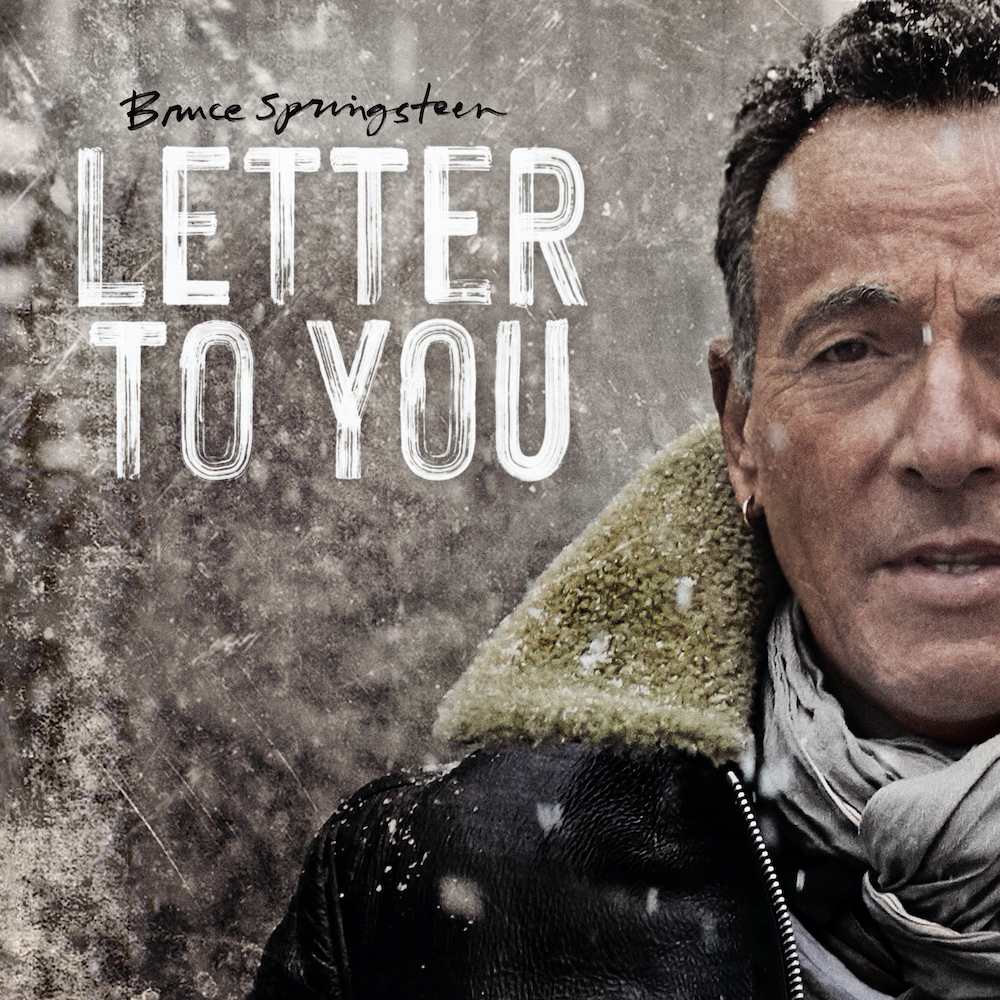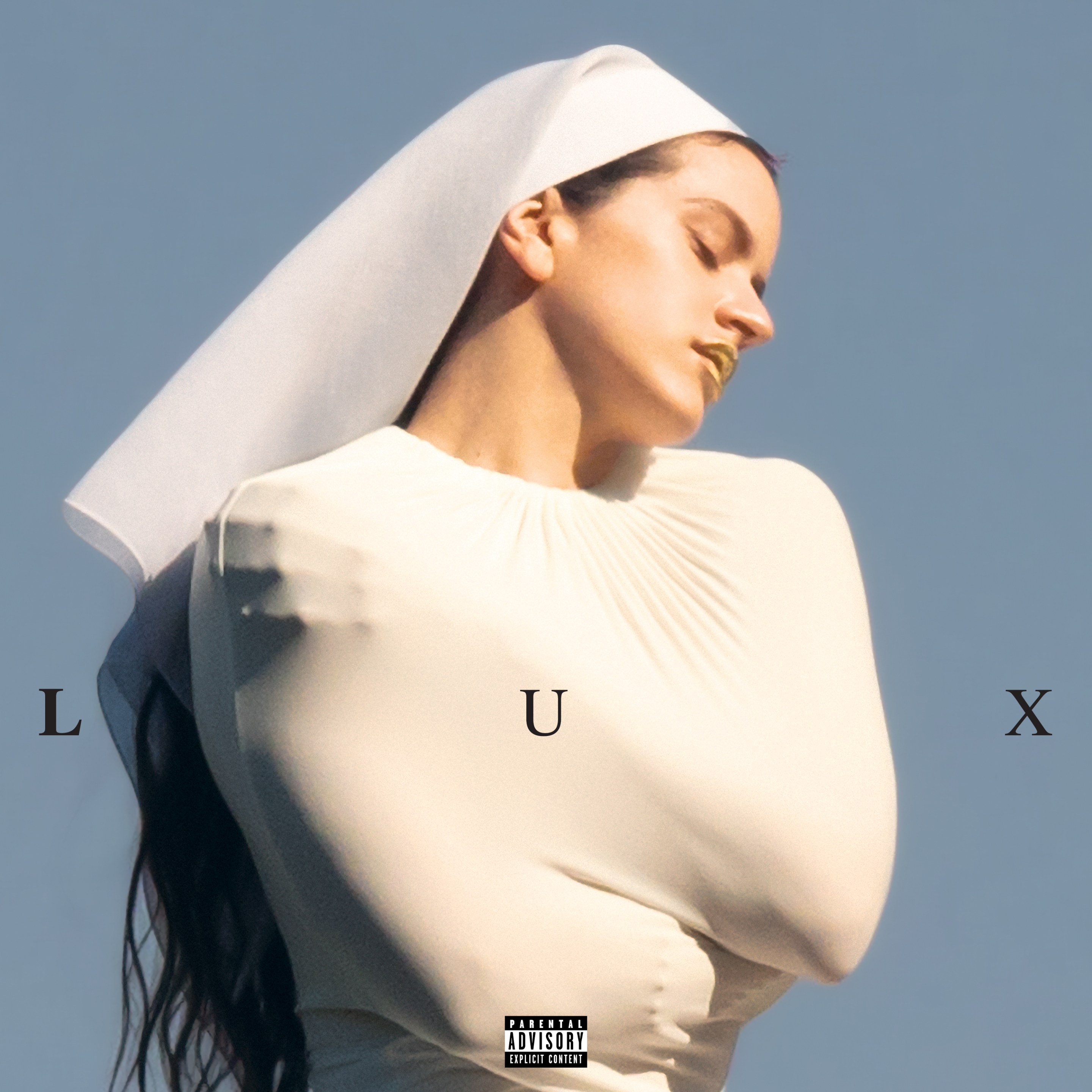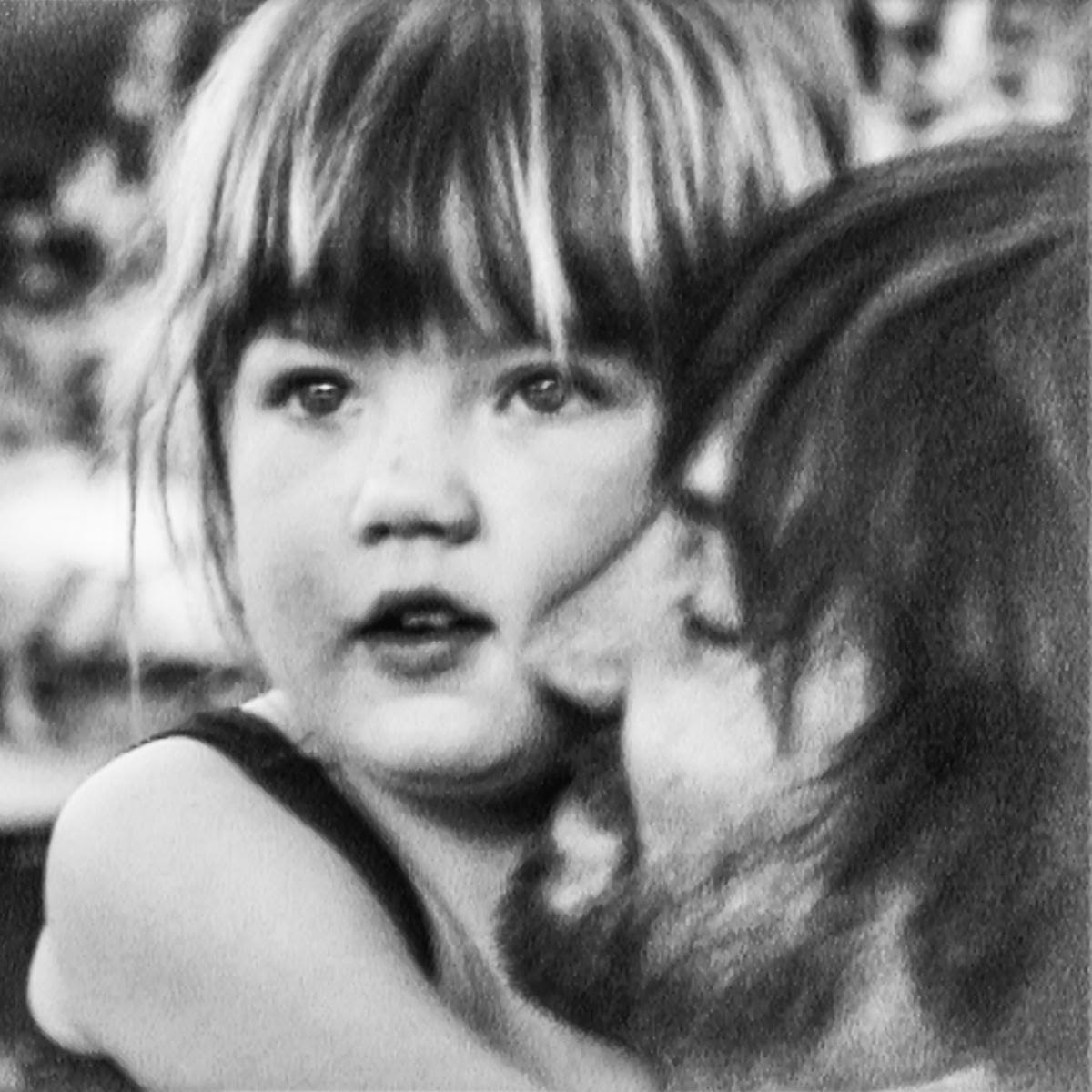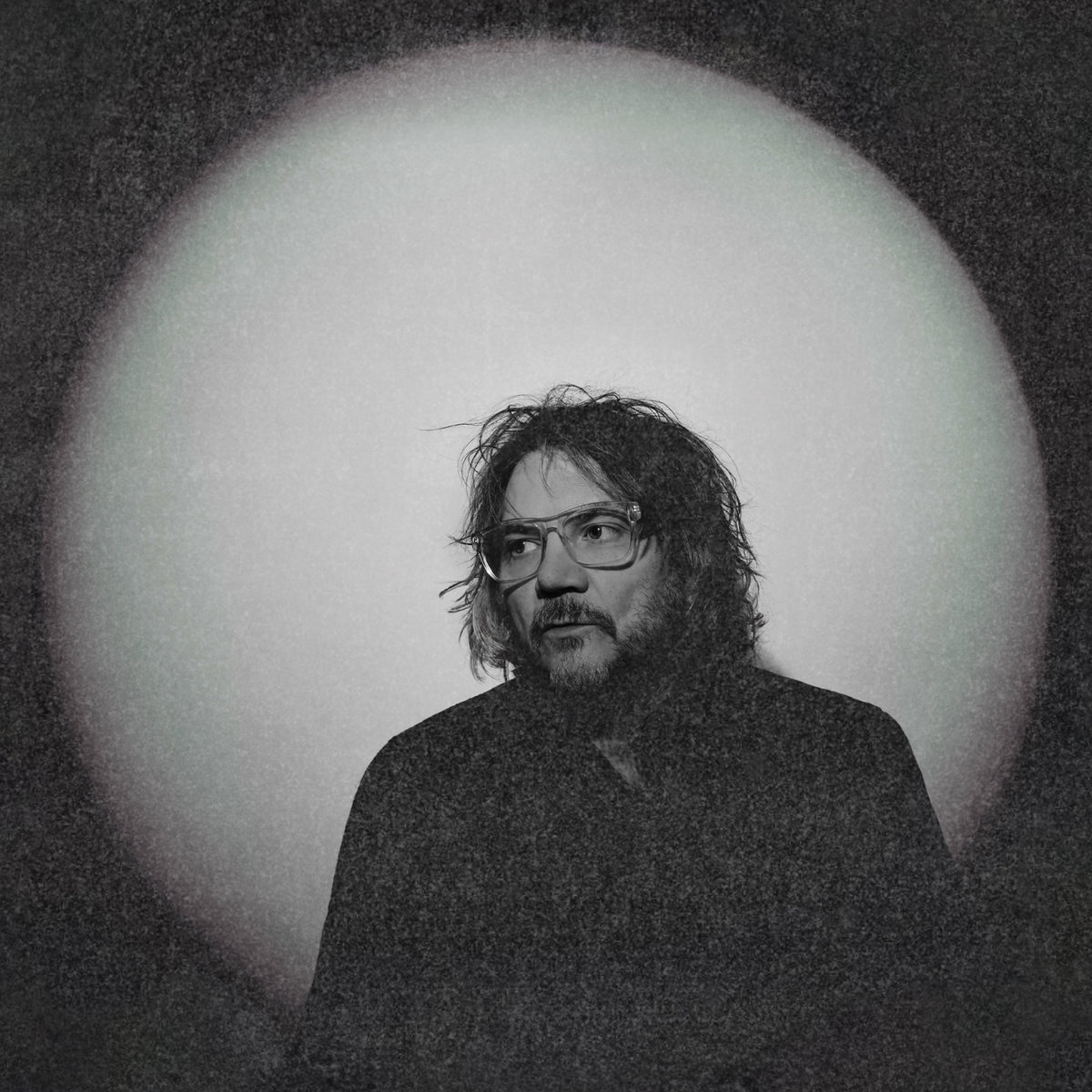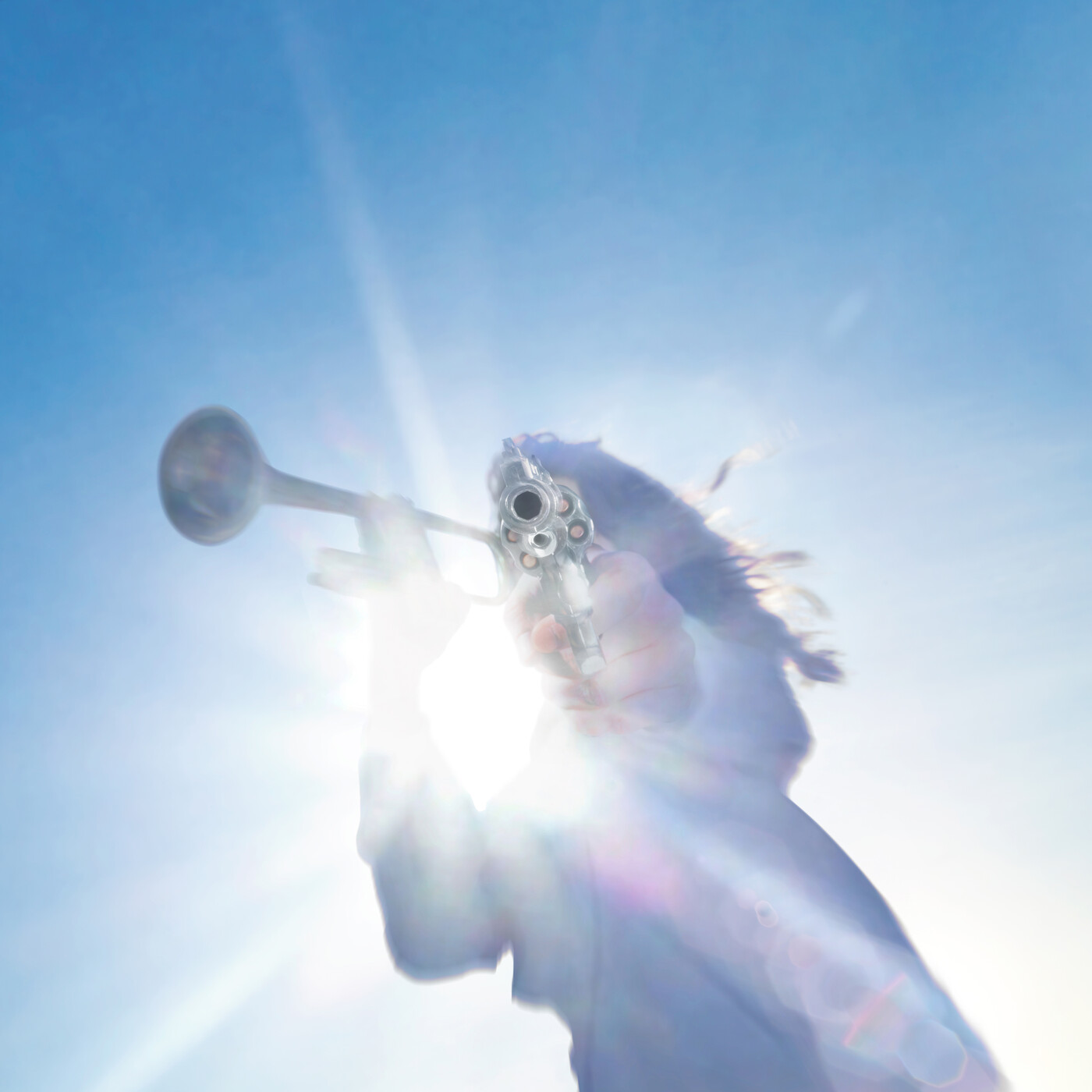Bruce Springsteen and the E Street Band know how to make introductions. They know how to begin telling a story. On Born To Run, they offered up one of the great album openers of all time in "Thunder Road," a song that was already defeated yet was giving it one last go, serving as the real mission statement for Springsteen’s early career. "Badlands" was a riotous lead-in to the harder-edged Darkness On The Edge Of Town, "The Ties That Bind" the first word on the familial concerns of The River, "Born In The U.S.A." a sardonic and pissed-off overture for the Big Ideas album. These are big, bold songs that open up an album’s world immediately. Letter To You does not begin this way.
Instead, Springsteen’s latest outing with the E Street Band starts in an uncharacteristically somber, restrained place. Letter To You's opener is a moving little song called "One Minute You’re Here"; you can probably already imagine the thought is completed with "Next minute you’re gone." "One Minute You're Here" is all images of things passing by, ephemeral memories and faces as life tumbles forward -- a train barreling through town in one verse, a seasonal fair in another. All things that come in and out of our lives without us even thinking about it, all swirling together into a song about loss and one’s own mortality. It's not mournful; there's a gravelly beauty to it akin to Springsteen's underrated 2005 solo endeavor Devils And Dust. But it's a far cry from a full-throated, triumphal return of the E Street Band. This is a different way for Bruce and his longtime comrades to open an album, in no small part because there has never been an E Street Band album like Letter To You.
Partially the difference is practical: One of the big hooks with Letter To You is that not only is the E Street Band back, but they recorded a late-era Springsteen album completely live in the studio. The last E Street Band album kinda depends on how you look at it: Technically there was the 2014 odd-and-ends covers/lost songs we're-just-happy-to-have-Tom-Morello-in-the-band collection High Hopes, and 2012's Wrecking Ball had the feel of an expansive E Street work despite only featuring the members here and there, akin to Tunnel Of Love. In a sense, the notion that Letter To You was eagerly written with the E Street Band in mind is reminiscent of something like 2007's Magic.
Either way, it’s certainly been a very long time since Bruce and the band flirted with such a raw, unadorned attempt to capture their legendary live sound. It was an enticing prospect for those of us who have spent years appreciating Springsteen’s latter-day work and mourning some overlooked songwriting lost to suffocating production. Letter To You is unique because it's rare to hear the E Street Band going full force in the studio like this, all these decades later. But perhaps more importantly, Letter To You is unlike anything that's preceded it because Springsteen has never adopted this sort of tone -- certainly not with E Street, and really not even on his solo albums.
Leading up to this point, Springsteen has spent a good chunk of time in legacy mode. The last E Street tour was behind the expanded anniversary reissue of The River, and was originally based around playing the album in full. In 2016, Springsteen released a memoir, and he later embarked on a one man Broadway show tied to it that primarily focused on his origin story. Even when there’s been something new -- High Hopes, last year’s Western Stars -- it’s been primarily corralling old, leftover material. For a long time, it sounded like it wasn’t just that Springsteen hit a wall during the ‘10s in terms of writing E Street-friendly music, but that he wasn’t writing much at all.
For years, there have been rumors of further archival projects like a second Tracks and the long-awaited Born In The U.S.A. expansion, but even vaults as deep as Springsteen's vaults must be approaching the later rounds of excavation at this point. All of which is to say: Letter To You could register as the first real signal of a new chapter following years spent on retrospective work. This is Bruce, making anthemic rock music, backed up by one of the great American bands of all time. For years he's worked on projects that sifted through his past, where he came from. Letter To You, then, is the sound of Bruce coming back home.
Musically and narratively, Letter To You mostly makes good on its promise: Springsteen and the band have successfully shed the leaden slickness that often draped over his 21st century records and instead harnessed a convincing approximation of their loose-yet-impeccable bar-band-turned-arena-rockers live sound. Letter To You is a vibrant and energized album, maybe even just a bit raucous at a few points -- even in its heavier moments you can feel a sort of palpable joy coursing through it. All the decades lead to this, the band being able to get back together and knock out an album in four days. It gives Letter To You a casual, almost intimate, feeling even while the album echoes bits of that old-school E Street sound, that carefully arranged bombast.
Letter To You partially plays like one passage of the E Street Band’s infamously long concerts, and there are plenty of ways in which it also boasts the same thematic cohesion Springsteen always prides himself on. Even the weaker songs feel like a part of the story. After "One Minute You're Here," the album stays strong in its opening stretch: "Letter To You" hits differently than it did as a single, becoming the moment the door gets kicked down following the quiet prologue, and "Burnin' Train" is a surging charge true to its name. The middle of the album is the only real place it lags. "Last Man Standing" is a solid track that recalls the Magic-era aesthetic, while "The Power Of Prayer" plays similarly but also feels more like a late-era Springsteen also-ran. "House Of A Thousand Guitars" is a complicated situation: Placed at the core (and earmarked as a favorite of Springsteen’s and/or one of the skeleton keys to the album), it has a lot of heavy lifting to do that its wandering, pseudo-grandeur piano arrangement doesn’t always quite pull off.
On early listens, it can almost be difficult to land on what the album’s stronger or weaker moments are, which songs stick with you and which won’t rank high amongst Springsteen’s latter day output when the dust settles. That’s because the album hits you pretty instantly with a lot of self-referential reflection; even if there’s a grateful and even awestruck timbre at times, you can’t help but feel a kind of gravity aching at the core of the album. Letter To You starts with a song about mortality, and from there it often meditates on getting older and losing those around you.
"Last Man Standing," reportedly the song that spilled out and kicked off the writing spurt that yielded Letter To You, was inspired by the loss of George Theiss, Springsteen's old bandmate from his '60s band the Castiles; when Theiss died in 2018, it made Springsteen the final surviving member of the band. "I hear the sound of your guitar/ Comin' in from the mystic far," Springsteen later sings on "Ghosts." "It’s just your ghost/ Moving through the night." There and elsewhere, Springsteen reckons with death by asserting that we carry people with us long after they’re gone. In the album's closer, "I’ll See You In My Dreams," he ends the album by finding solace in that same concept: "I remember you my friend/ And though you're gone/ And my heart’s been emptied it seems/ I’ll see you in my dreams."
Perhaps even more so following years of memoirs and digging up the past, there’s a certain poignancy to hearing Springsteen engage with time’s passage. He's had albums that made him sound wise beyond his years, but he’s also possessed a vitality and electricity, especially onstage, that would make you forget he too was aging, just like his peers. It almost takes you aback to hear him at 71, like anyone else at his age, trying to make sense of why his friends aren’t around anymore and what that means.
Sometimes, that turns towards a sort of of self-mythologizing about the E Street Band and the power of rock 'n' roll. Scenes of a fiery set leaving no one alive (metaphorically, this time) in "Ghosts" speak to a younger, wilder time from the other side of a long journey. There's almost a complete arc from "Last Man Standing" to "House Of A Thousand Guitars" alone: From the Legion halls and bar gigs of the '60s and his Castile days all the way to now, a church-like evocation of what he always sought to build. That other musical world that's bigger than dozens of stadiums combined, the place all of us have gone to visit with E Street through the years.
Springsteen pulls a little trick that makes this tangible, that assertively wraps threads of past and present. There have been, over the years, songs that began their lives in one chapter of Springsteen’s career and made it out into the world in a far different one. But aside from archival compilations like The Promise, he’s never dug as far back as he does when he finally has the E Street Band record three extremely early songs: "Janey Needs A Shooter," "If I Was The Priest," and "Song For Orphans." All of them date back to the early '70s and have mostly been circulated as bootlegs; "Janey Needs A Shooter" almost became a Darkness-era song, and Warren Zevon liked the title so he borrowed it. This material almost goes back to the source of Springsteen and the E Street Band. And if the zany Greetings-style lyrics of "If I Was The Priest" didn’t clue you in to that, the performances will.
The old songs are, simply, miraculous. It’s not like the young Springsteen has been beamed in -- this is him and the E Street Band as they are now, as older men and women, exhuming bits of their former selves. This is, essentially, exactly what it sounds like when they would play their oldest material live on recent tours, but to many of us it registers as new, creating a sort of disorienting time warp several times across Letter To You. These are the highlights of the album, an album that is occupied with the past and with the glories and losses of our lives, that then finds the E Street Band reunited and reinvigorated and able to tap into something from long, long ago -- even down to tiny details like the tone of the organ. It's almost eerie, like the ghosts running through the album have become a bit more present the further back the band allows themselves to go. But these songs are also emphatic, roiling things, Springsteen letting the band turn each lost composition into a muscular, ragged mini-epic. One could imagine them loosening up the band to the point where other bits of pure E Street energy was allowed to shoot through -- small moments of transcendence, like when Jake Clemons upholds his late uncle’s mantle in outros for "The Power Of Prayer" and "Ghosts."
In a sense, then, the supposed new beginning Letter To You is of a piece with Springsteen’s recent tendency to be tying up the loose ends of his past. As much as he's also insisted that he’s thinking about the future on the other side of all of this, he's also said as much -- the album is about the past, and the album is about his decades-long relationship with his fans. It's about the why and how, in abstract terms, that all of this happened. That's what the title of the album is about: "In my letter to you/ I took all my fears and doubts/ In my letter to you/ All that I found out/ In my letter to you/ All that I’ve found true/ And I sent it in my letter to you." These are the two halves of Letter To You, remembering those who are no longer with us, and then celebrating the connections that bound us through all this time.The thing is: In either instance, Springsteen’s words are disconcertingly past tense.
At his age, it makes sense Springsteen’s in this frame of mind. Many elder icons reach this point far sooner. There’s just a twinge, an extra bit of sadness, imagining Springsteen reaching that point. This is a man who hit a late-career resurgence by rediscovering his muse in tumultuous times. He catalogued 9/11 on The Rising, the Iraq War and Bush administration on Magic, the Great Recession on Wrecking Ball. What's followed is almost a decade of Springsteen delving back into his old myth and shelved projects.
After all of that, even Springsteen acknowledging mortality somehow makes for a smaller-stakes album than his lineage of State Of The Union dispatches this century. Across Letter To You, only "Rainmaker" taps into the current American moment, despite being written before Trump was elected. In an interview with Rolling Stone, Springsteen argued a Trump album from him "would be the most boring album in the world," which might be partially true at this point; it still registers as odd that Springsteen, after the last two decades of his writing, seems to be completely sitting this out artistically. Yet while Letter To You might not be as directly topical or narratively ambitious as some of his other 21st century work, it makes up for it in the pure, lived-in quality of its sound. It leaves you wondering what could come next, if Springsteen’s found new ideas in this vein.
But then that’s the shadow hanging over Letter To You. As powerful as its best moments are, all involved have to give a matter-of-fact answer to whether or not it’s the last E Street Band album -- a sense that, at this age, anything honestly could be the curtain call. Springsteen evidently has a ton of plans for the coming years, but at the same time, he has never spoken through the E Street Band like this. That gives the album a strange, disquieting undertone: It’s exhilarating to feel like we're back in the room with Bruce and E Street after all these years, and to hear them having so much fun playing together, and yet that almost makes it more melancholic to imagine we could be approaching the end of the story.
After all, Letter To You seems like it almost never happened. You could’ve just as easily imagined Springsteen coasting into his 80s or 90s making sparse folk records. As he sings in the album’s title track, he’s put just about everything into what he’s given us over the years, into that letter. There'll come a time when there isn't much left to say in the specific voice he reclaims on Letter To You. That makes this particular missive hit different, as if he’s trying to lightly sum up all that past correspondence with gentle recurring images of trains and small town bars alongside talk of time’s wear and tear. There’s a reason Letter To You begins unlike any other E Street album, and a reason it registers unlike any other E Street album. In half a century, it’s never felt like the letter might be the last -- at least in this form, with these people together. It never quite felt like the letter was saying goodbye.
Letter To You is out 10/23. Pre-order it here.
